17 Different Types of Walnut Trees (with Pictures)
-

- Last updated:
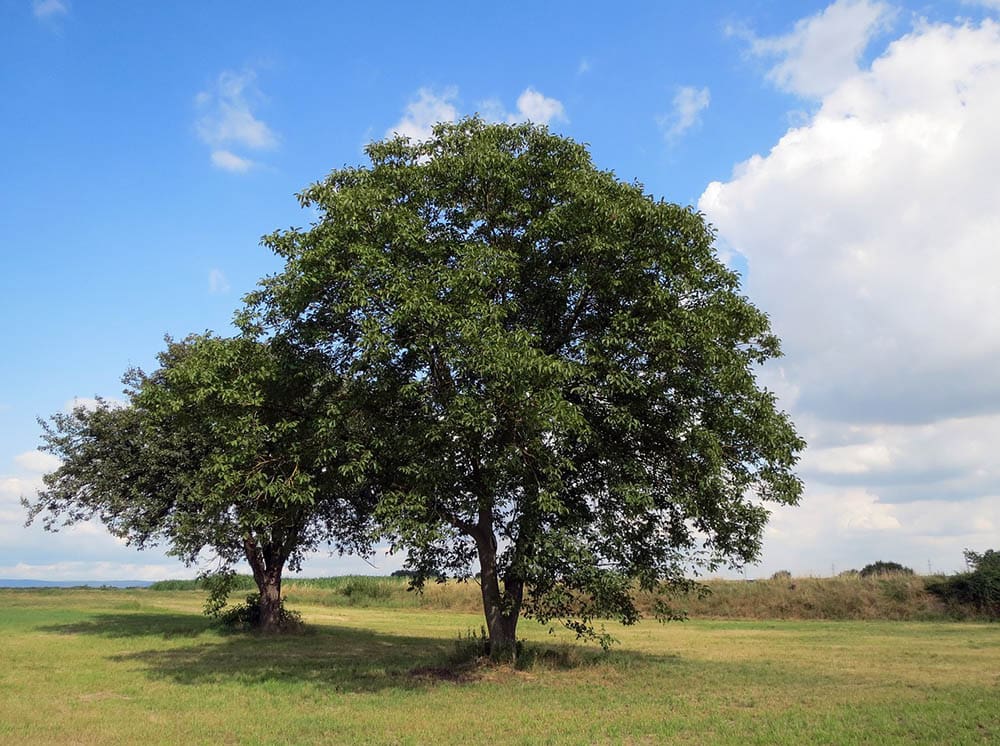
Walnut Trees are a fantastic tree species that belong to the family of Juglandaceae. They are huge, deciduous trees that look beautiful in landscapes and provide delicious nuts. Walnut Trees come in different sizes, and each type has different characteristics.
If you would like to plant a walnut tree or just know more about the available varieties, this is the place to be. We will provide you with a list of some of the most popular walnut trees, along with their unique features.
The 17 Different Types of Walnut Trees
1. Black Walnut Tree

Black Walnut Tree is a walnut tree native to North America, and it’s known for its deep dark wood and delicious nuts. It’s not too good to plant it near other plants because it releases chemicals that can harm other organisms. Black Walnut Trees can grow over 60 feet, and their spread reaches anywhere from 50 to 80 feet. Their foliage turns yellow in autumn, and the nuts are ready for harvest in October. They have to be harvested quickly because they can otherwise get moldy.
2. Arizona Black Walnut Tree
Arizona Black Walnut Tree, or River Walnut as it’s also called, is a medium walnut tree with a rounded crown and dark-gray bark. They have long leaves, gray twigs, and they grow up to 50 feet when they mature. Their fruits (nuts) are about 1 inch in diameter, and their flowering season lasts from April to May. The Arizona Black Walnut Tree grows best in moist soils, and they require minimal maintenance.
3. Northern California Black Walnut Tree
The Northern California Black Walnut Tree is a walnut species native to America, and it’s typical in Oregon and California. It is also called Hindu’s Black Walnut. This type of walnut tree is pretty large and can reach over 60 feet in height. It has a single trunk, 1-foot-long leaves, and usually doesn’t have branches for around 10 to 40 feet. Northern California Black Walnut Trees nuts are smooth and have thick brown shells.
4. Southern California Black Walnut Tree
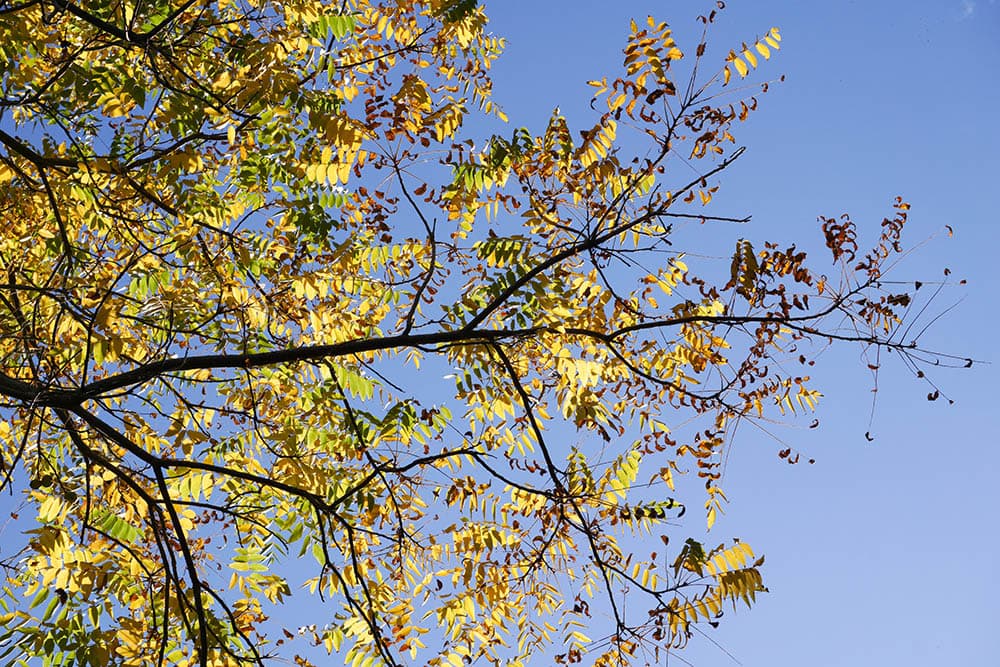
Southern California Black Walnut Tree is another tree native to the US, specifically California. It’s considered a smaller tree or a larger shrub, and it can grow up to 20 to 40 feet tall, which is considered small among walnut trees. They are very similar to the Northern California Black Walnut Tree, but they grow in different parts of California. They prosper in moist, deep soils, and their outside appearance can depend on the terrain they grow in. This walnut tree is easily adaptable and has a lifespan of over 100 years.
5. Butternut Walnut Tree

The Butternut Walnut Tree is an appreciated walnut tree endemic to North America. This type of white walnut tree has an incredible tropical feel to it. Butternut Walnut Trees prefer rich soil, full sun, and you don’t need pollinators because they are self-fertile. They are slow-growing, and they can live for over 70 years. Their leaves typically have 10 to 17 leaflets, and they got their name because their nuts have a buttery-like flavor. This walnut tree can reach 40 to 60 feet in height and spread around 30 to 50 feet.
6. Andean Walnut Tree
Andean Walnut Tree, also known as the Columbian Walnut Tree, is a species that comes from Columbia, Ecuador, and Peru. It’s considered an endangered plant in many places because its numbers have dropped due to its prestige wood and human activities. Considering other walnut trees, this one can be counted into fast-growing ones. They can be up to incredible 80 feet, and they require full sun and rich soils for the best growth. Their unique-looking, large fruits are green and yellow on the outside, while the insides are deep brown or black.
7. English Walnut Tree
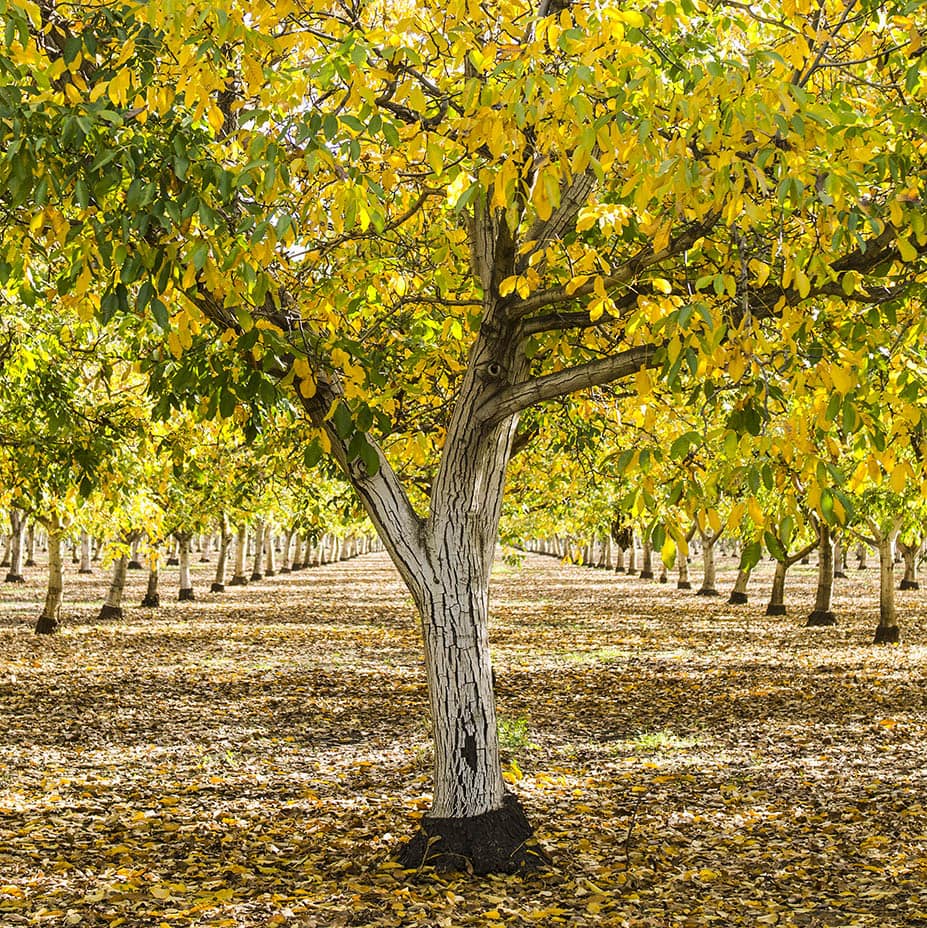
English Walnut Tree is a walnut specimen that’s native to Europe. It is a broadleaf kind, with 16 inch-long, shiny leaves with 5 to 9 leaflets. They can reach extreme heights up to 120 feet and have a trunk over 6 feet in diameter. This walnut tree has dark wood commonly used for paneling and furniture. It’s used as a landscape tree, and it grows the best in full sun and acidic, moist soil. The fruit this walnut produces is green with a dark brown walnut inside.
8. Manchurian Walnut Tree
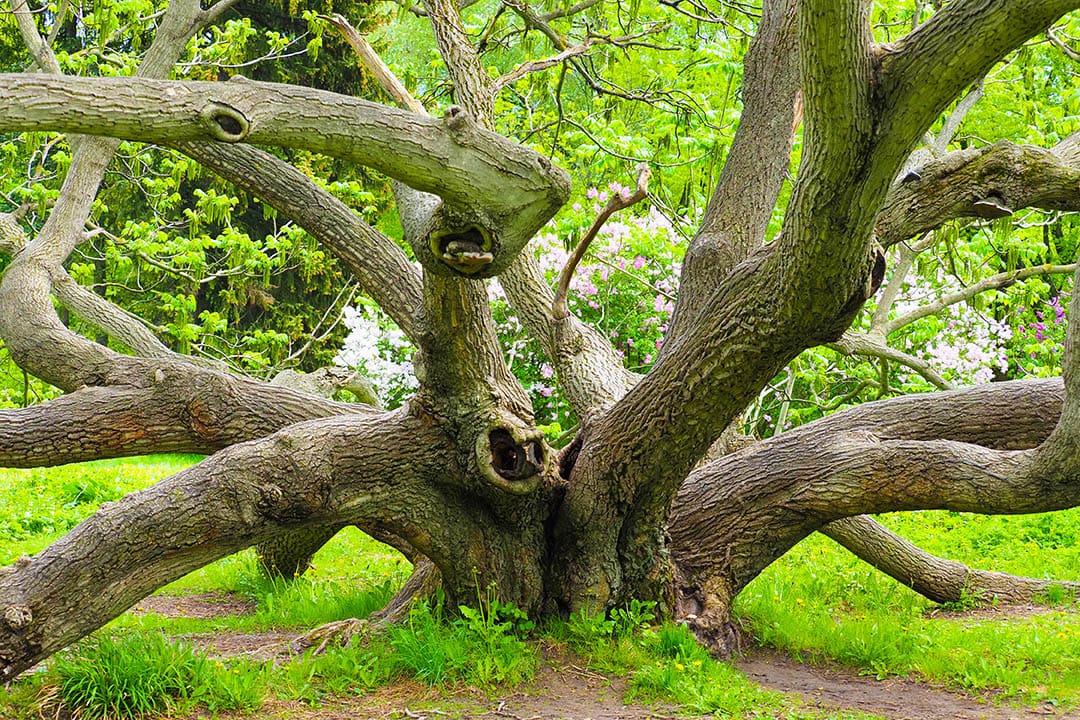
Manchurian Walnut Tree is a beautiful walnut tree initially from the Eastern Asiatic Region. This species blossoms in spring and ripens in autumn, bearing delicious nuts that are hard to crack. Their mature height reaches 80 feet, and the tree is very low maintenance. They grow the best in moist, well-drained soils in full sun. Make sure you plant it in a proper location because it’s difficult to transplant and avoid shade at any cost.
9. Japanese Walnut Tree
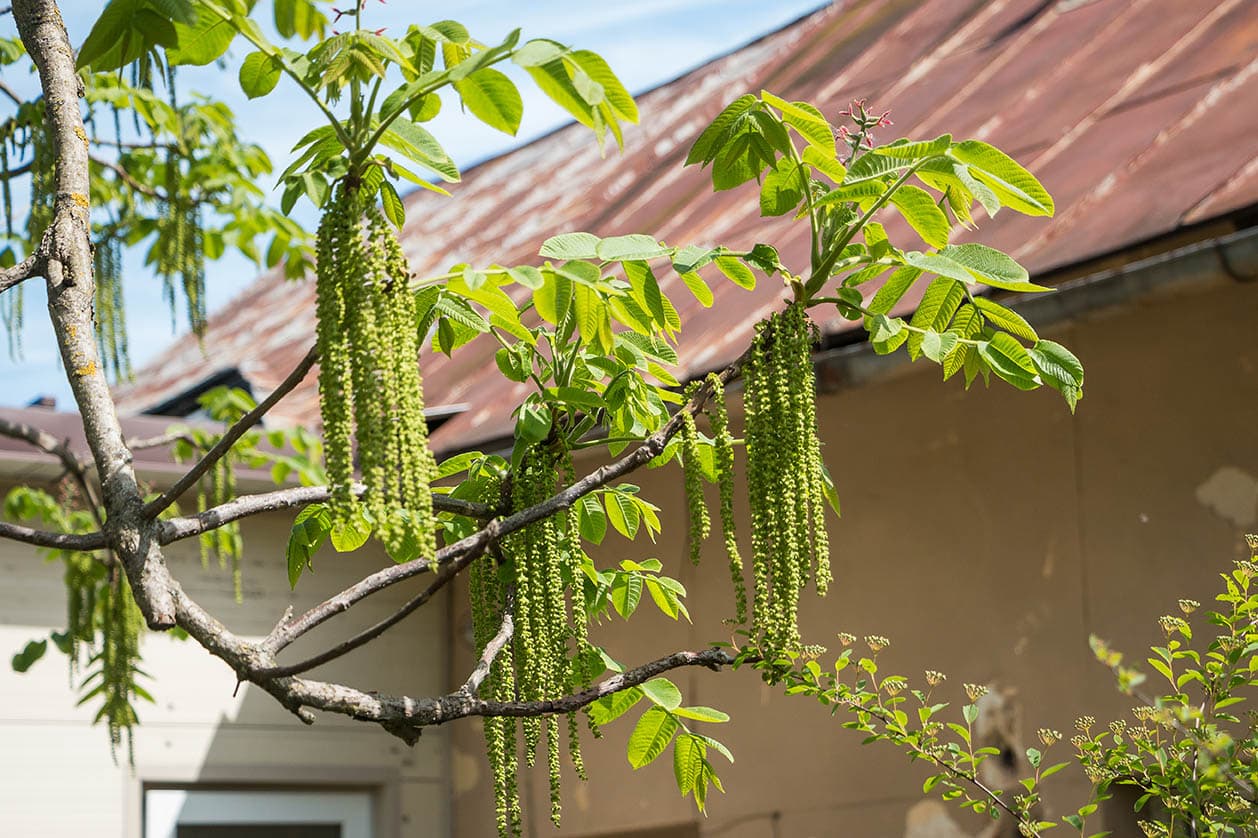
As the name says, the Japanese Walnut Tree is native to Japan. It’s a broad-crowned, deciduous tree that needs full sun to prosper. It can grow in almost any soil type, and they have excellent resistance to weather changes. The Japanese Walnut Tree can be up to 65 feet tall, and it can live for over 50 years. Their leaves are long and broad, with over 11 leaflets. They have multiple nuts attached together covered in green husk before they ripen. The nuts are oily and have plenty of benefits for your health.
10. Little Walnut Tree
Little Walnut Tree, also known as Texas Walnut Tree, falls into the small walnut tree category with a height of only 10 to 30 feet. It has a round crown and smooth branches. They bloom from March to April and require partial shade and dry soil to reach their best potential. This walnut tree can tolerate both heat and cold the Japanese Walnut Tree As and provides small edible nuts. They attract wildlife, so be prepared to attract squirrels, birds, and other creatures into your yard.
- See Also: 13 Different Types of Bonsai Trees
11. Chandler Walnut Tree
The Chandler Walnut Tree was invented by the University of California, and since then, it has been one of the most popular walnut species. It is one of the most productive walnut trees, and it has the best growth in moist, well-drained soils. They grow up to 50 feet, but they are mostly trimmed to look shorter. The nuts that this walnut tree produces are large and have thin shells. This is a self-pollinated specimen, so no pollinator is needed. They can live for over 100 years and will be an exquisite addition to your plant collection.
12. Franquette Walnut Tree
Franquette Walnut Tree is a traditional variety coming from France. It is highly productive and can be grown commercially or just be an addition to your landscape. This is another self-fertile species, but it can be combined with other walnut trees for better production. Nuts from this walnut tree are brown, thin-shelled, and usually easy to harvest. Their mature size reached anywhere from 30 to 60 feet, and it bears fruit in 3 to 5 years.
- See also: 10 Types of Tree Nuts (with Pictures)
13. Hartley Walnut Tree
Hartley Walnut Tree is another walnut tree that has been produced by the University of California. They are late bloomers, and the nuts ripen from October to November. This species requires a pollinator to bear fruits, and they produce the best while in full sun and fertile, well-drained soils. Their mature size reaches 30 to 60 feet, and they usually have a spread of 20 feet. They have pointy, thin-shelled nuts that have rich nutrients. If taken care of properly, they can live for more than 75 years.
14. Fernor Walnut Tree
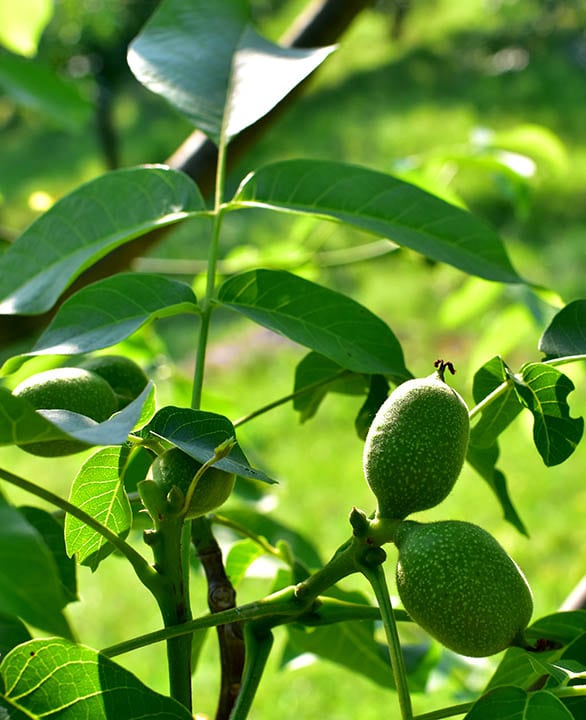
Fernor Walnut Tree is a French walnut variety similar to Franquette and Chandler walnuts. They can grow in any soil type, but it’s crucial to keep them in full sun or light shade. This walnut tree type is tolerant to blight, cold, and it starts producing very early once the tree is planted. It can be self-pollinating, but pairing it with another kind will make it even better. Frenor is the only walnut type that can be planted in high-altitude areas. It can be up to 30 feet long, and its nuts are large, covered with a thin shell. They bloom in spring, while the harvest is in September.
15. Apollo Walnut Tree
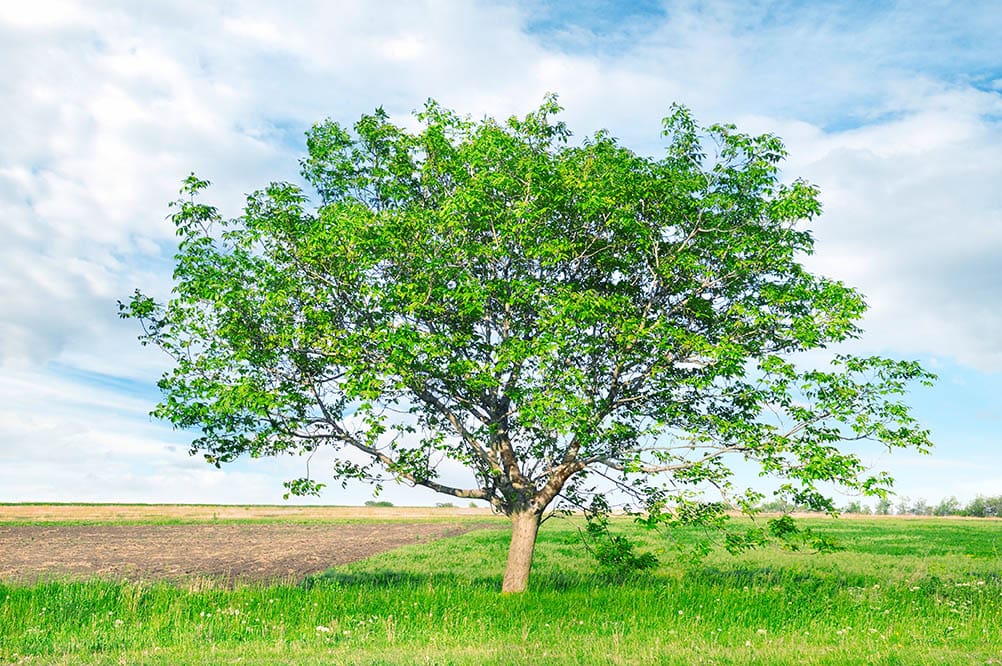
Apollo Walnut Tree is a walnut tree type discovered in the Czech Republic. This species can be over 65 feet tall and have a lush, round crown. Their leaves are long, smooth, with 5 to 7 leaflets. This walnut will reach its true potential in moist soils and warm climates. Apollo walnut is very cold resistant and can last under extreme temperatures. Their nuts are egg-shaped, with a small spike at the top.
16. Pedro Walnut Tree
Pedro Walnut Tree is a small walnut species with a mature height of only 30 feet. It blooms and ripens very late. This walnut type cannot succeed in areas that are too hot. It requires full sun its best growth. Pedro Walnut Tree requires around 400 chilling hours to prosper. Their nuts are light green and smooth, and it’s said that they are among the tastiest nuts compared to other species.
17. Lara Walnut Tree
Lara Walnut Tree is a variety that comes from France. It’s unique due to its spherical crown and the ability to bear fruits early. It is very resistant to diseases, and it’s easily maintained, making it perfect for any landscape. If planted in full sun or partial shade, which best works for them, the tree can reach 30 to 45 feet. Lara Walnut Tree is partially self-fertile and produces large, rough-shelled nuts. The harvest for this walnut type begins in late September and ends in late October.
Is a Walnut Tree a Good Tree?
A walnut tree can be a great addition to your garden while providing you with tasty nuts at the same time. It will make your landscape beautiful and add shade spots that will help during summer. Walnut trees are also used to make furniture and flooring, so they have eternal purposes. Overall, this is a really good tree to plant in your garden or backyard.
How Tall Will a Walnut Tree Grow?
The walnut tree height depends on which specimen you have planted. They all have different characteristics, and of course, some are taller than others. When it comes to their height, the smaller species can be around 30 feet tall, while others can grow over 120 feet. Make sure you learn their specifications before deciding to plant one in your landscape.
How Long Does It Take to Grow a Walnut Tree?
This is another thing that depends on the kind of walnut tree that you plant and the conditions it’s planted in. Still, most of them are slow-growing, so it will take time and patience until they reach their true potential. It can take them over 10 years to reach their mature height.
Final Thoughts
Walnut trees can grow almost anywhere, but adjusting a specimen to its required soil is essential for their best growth. Before buying a walnut tree, make sure to find out which one can flourish the best in your soil. After the investigation, plant the one that best fits your soil type, and in a few years, you will have a new landscape addition.
Featured Image Credit: No-longer-here, Pixabay
Contents



